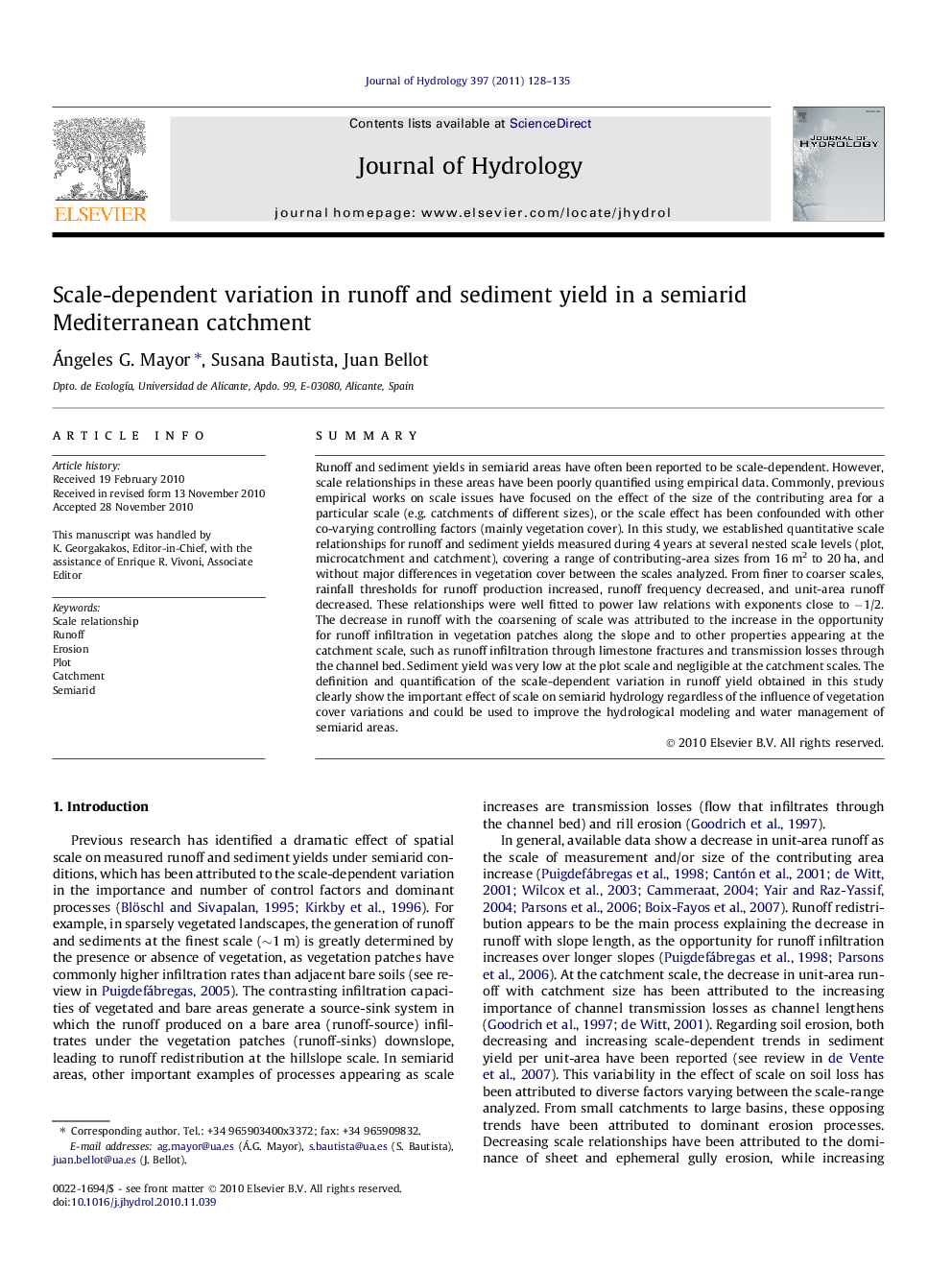| Article ID | Journal | Published Year | Pages | File Type |
|---|---|---|---|---|
| 4577861 | Journal of Hydrology | 2011 | 8 Pages |
SummaryRunoff and sediment yields in semiarid areas have often been reported to be scale-dependent. However, scale relationships in these areas have been poorly quantified using empirical data. Commonly, previous empirical works on scale issues have focused on the effect of the size of the contributing area for a particular scale (e.g. catchments of different sizes), or the scale effect has been confounded with other co-varying controlling factors (mainly vegetation cover). In this study, we established quantitative scale relationships for runoff and sediment yields measured during 4 years at several nested scale levels (plot, microcatchment and catchment), covering a range of contributing-area sizes from 16 m2 to 20 ha, and without major differences in vegetation cover between the scales analyzed. From finer to coarser scales, rainfall thresholds for runoff production increased, runoff frequency decreased, and unit-area runoff decreased. These relationships were well fitted to power law relations with exponents close to −1/2. The decrease in runoff with the coarsening of scale was attributed to the increase in the opportunity for runoff infiltration in vegetation patches along the slope and to other properties appearing at the catchment scale, such as runoff infiltration through limestone fractures and transmission losses through the channel bed. Sediment yield was very low at the plot scale and negligible at the catchment scales. The definition and quantification of the scale-dependent variation in runoff yield obtained in this study clearly show the important effect of scale on semiarid hydrology regardless of the influence of vegetation cover variations and could be used to improve the hydrological modeling and water management of semiarid areas.
Research highlights► Runoff and erosion in semiarid areas have a strong scale dependency. ► We obtained runoff scale relations without confusion from plant cover variation. ► Runoff frequency and unit-area runoff decreased with the scale. ► Scale relations were well fitted to power law relations. ► Scale runoff-decrease was attributed to source-sink dynamics and transmission losses.
